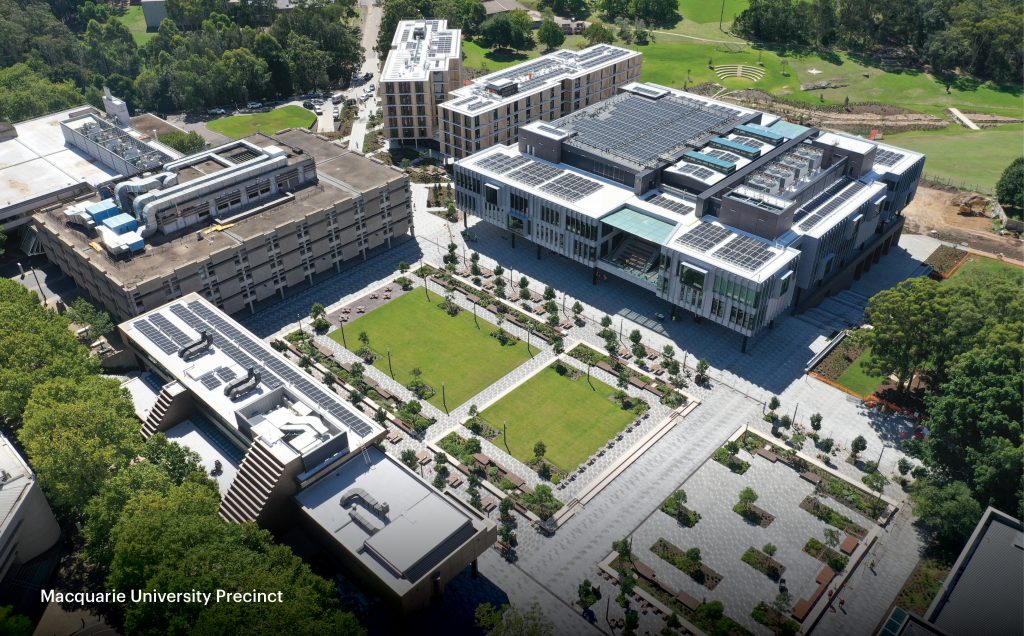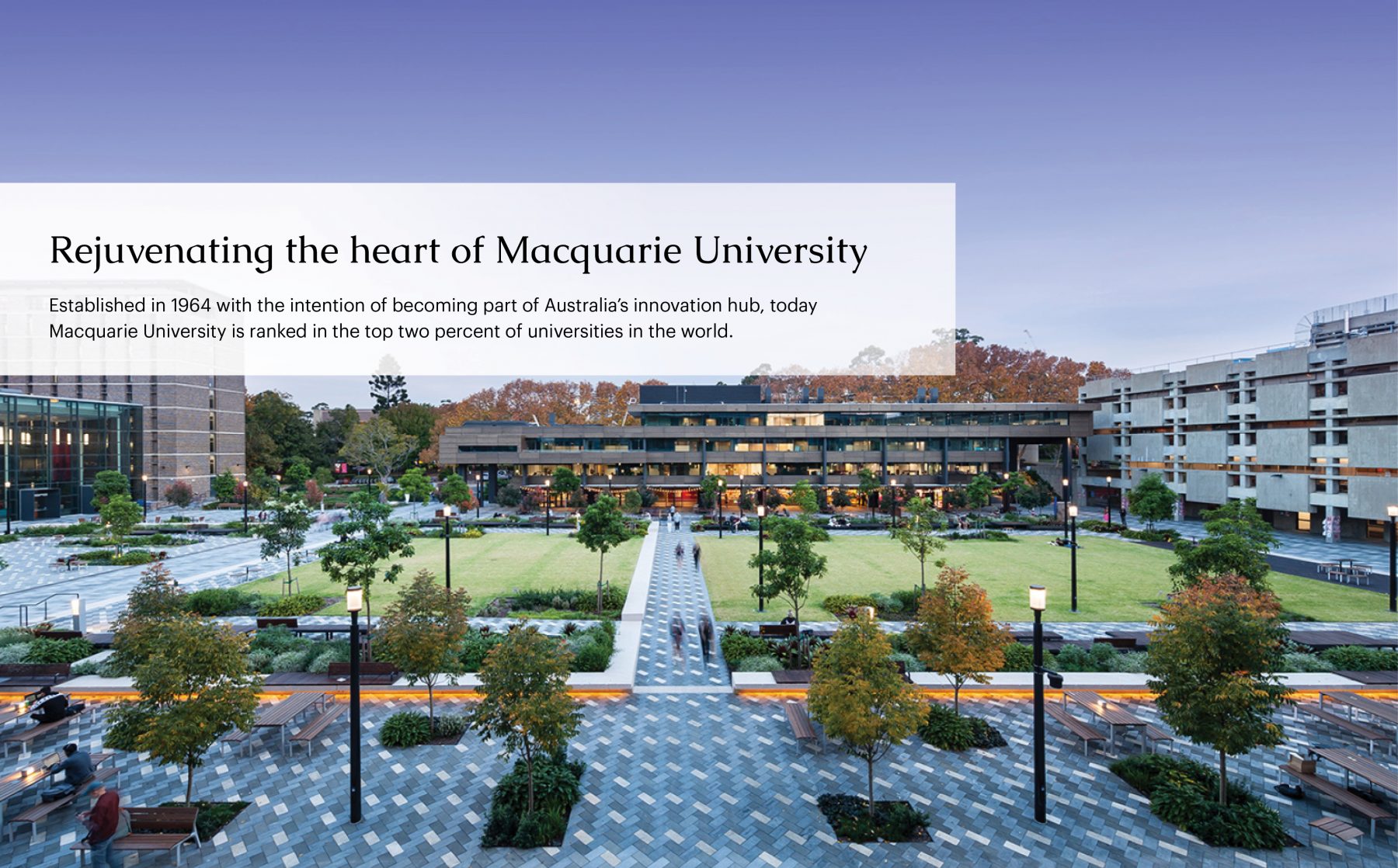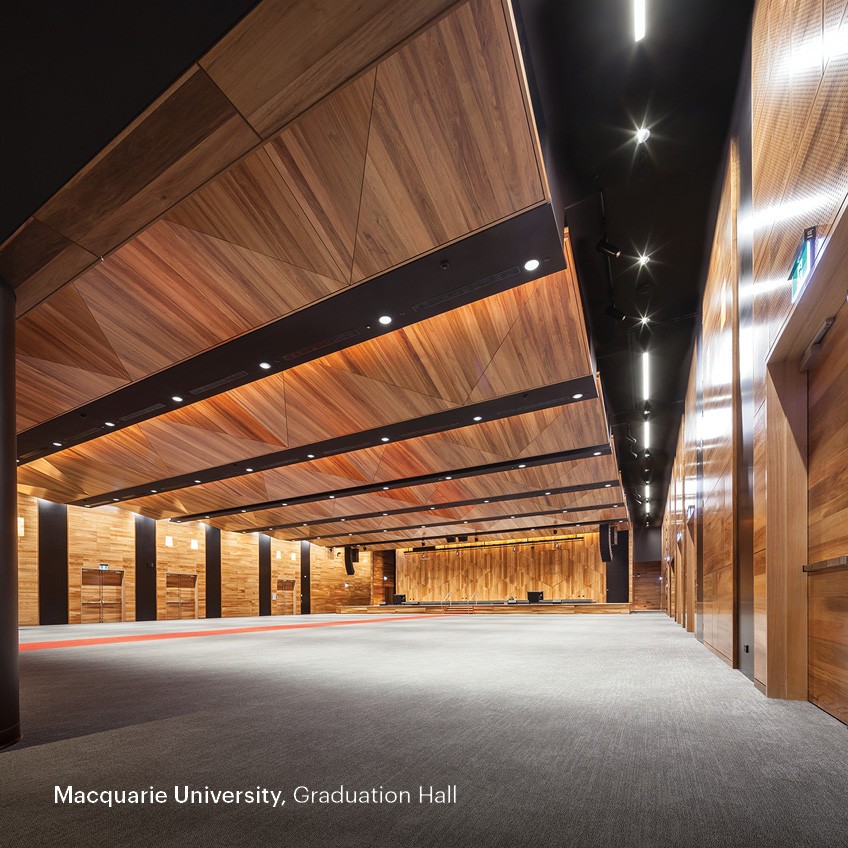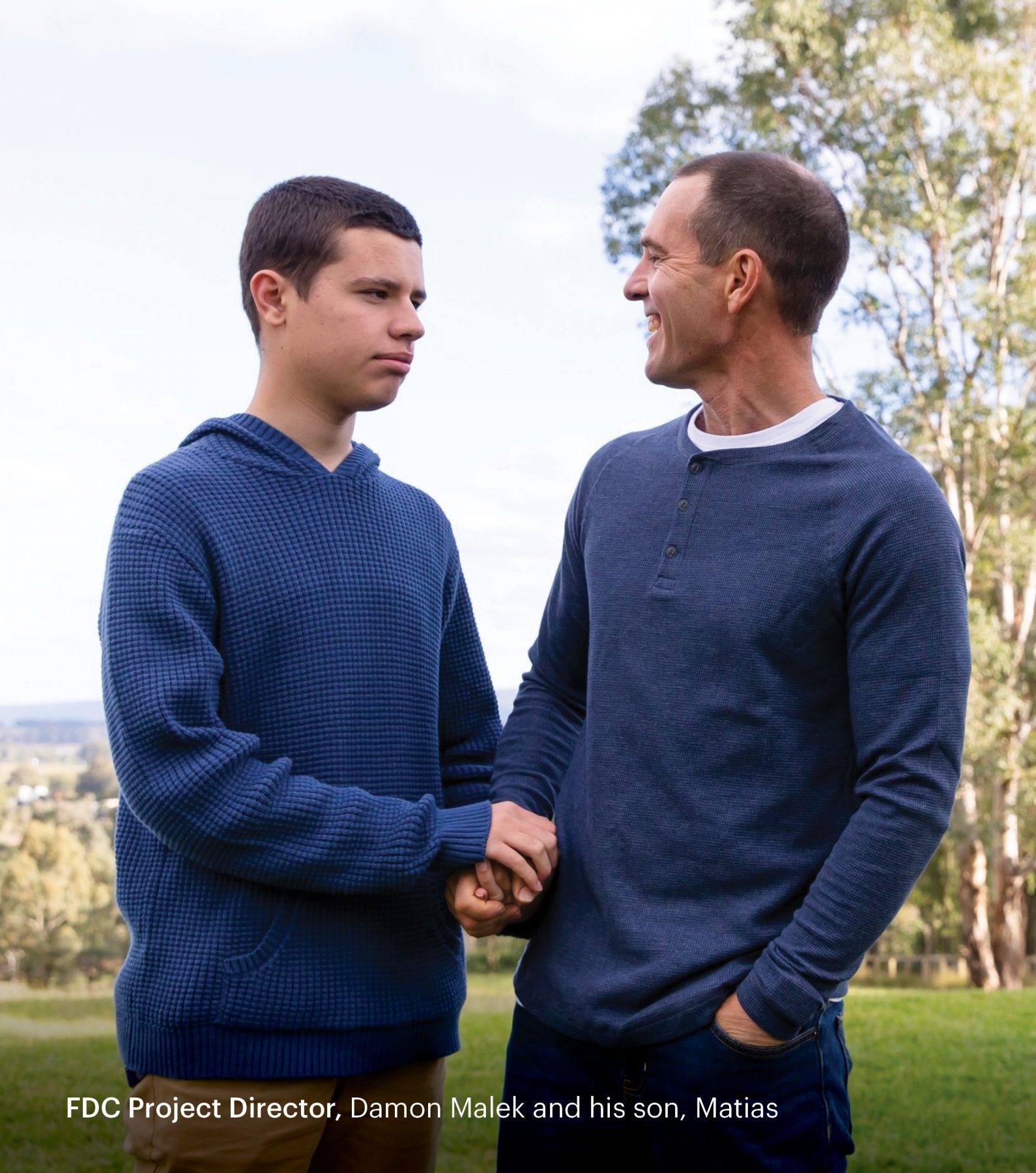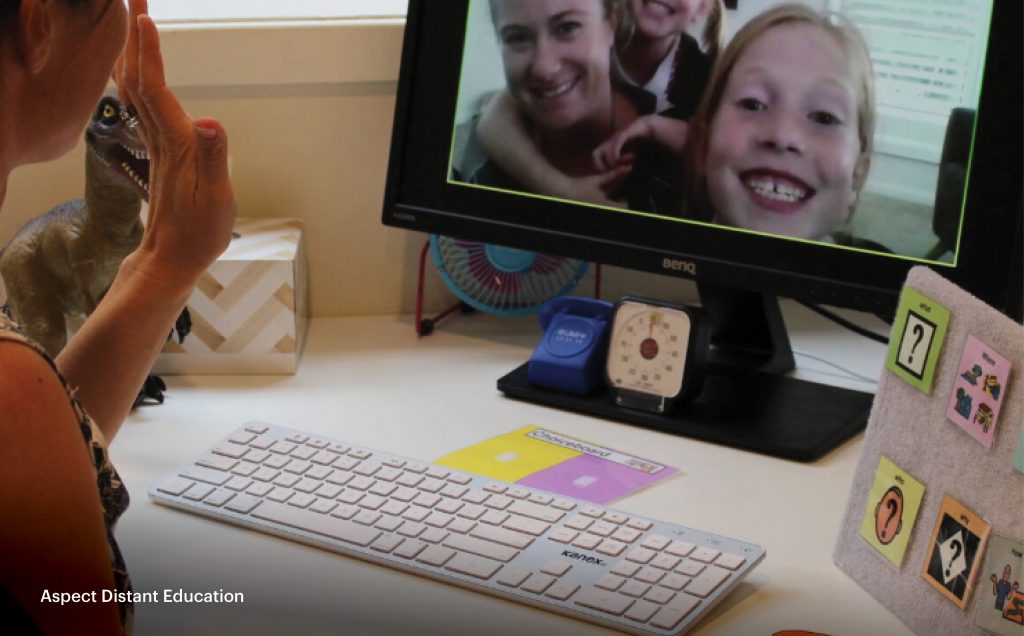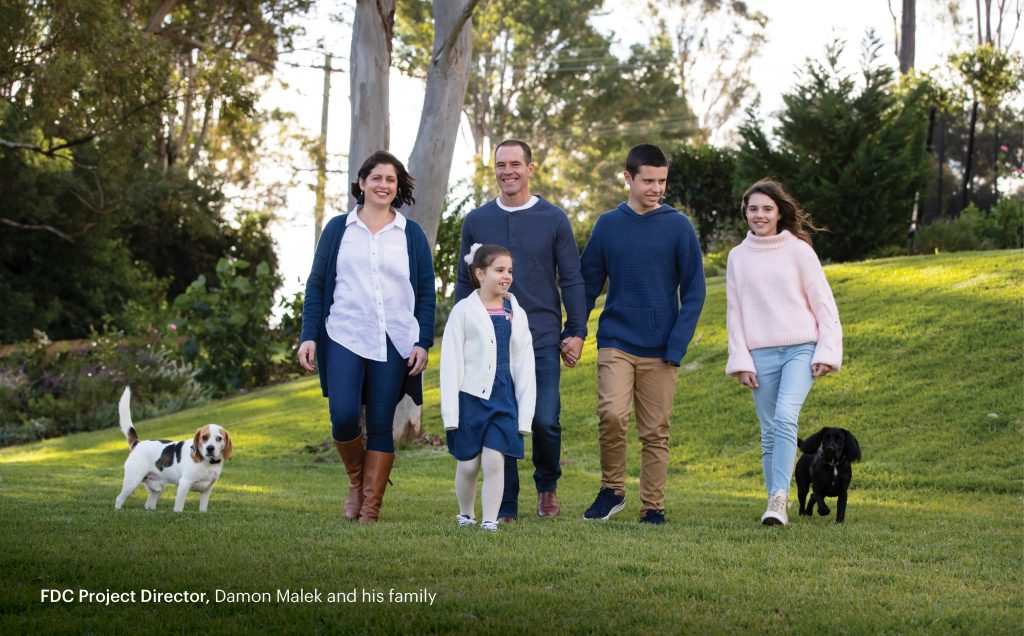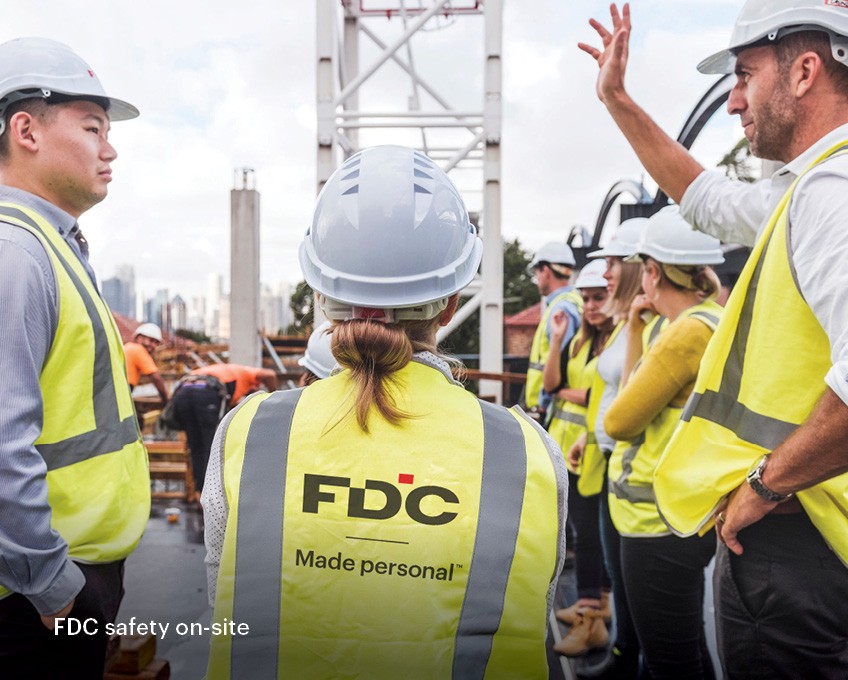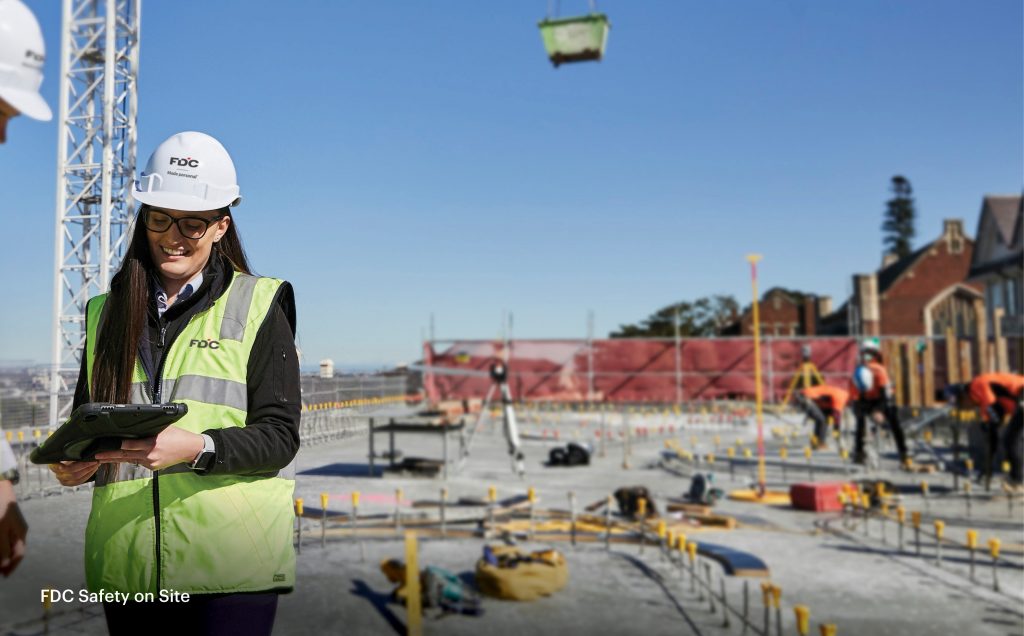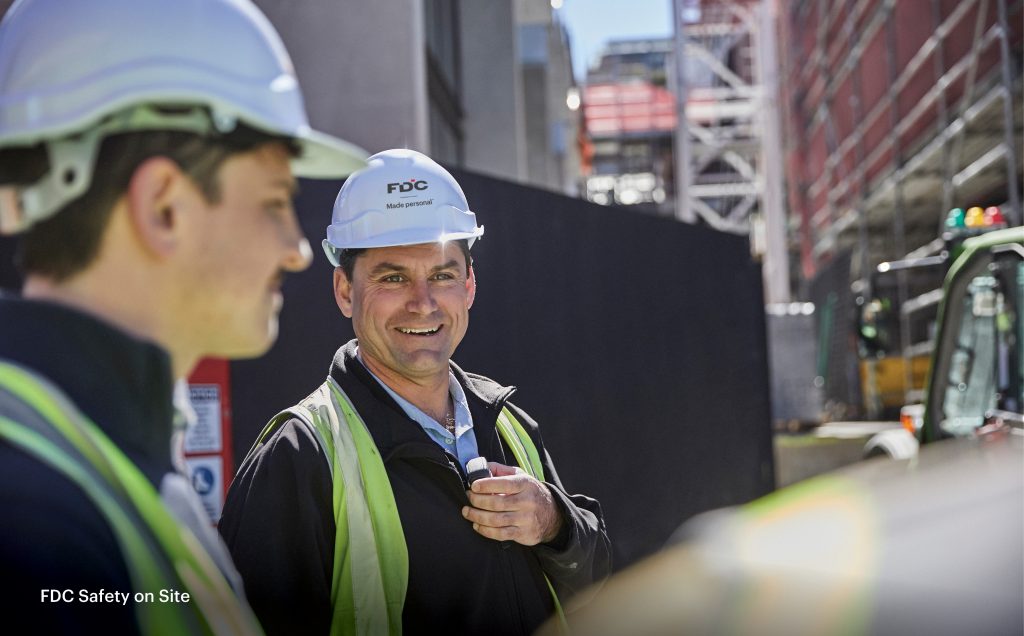Bringing students back to the heart
Through extensive consultation, placemaking workshops and a design competition, Macquarie University embarked on creating a safe and vibrant place to work and learn and live – bringing student accommodation into the heart of the campus.
“A lot of the Australian student accommodation in universities is located on the fringes, but we wanted to bring it into the centre. As we now have over 40,000 enrolled students, we wanted to create a truly mixed campus that students can come to, where they can mix, socialise and learn together,” Mark explains.
The Central Courtyard project spans an impressive 35,000m2 and included four buildings, the original central courtyard itself and the surrounding Mars Creek and its landscaping.
The Lincoln Building, which was designed by the renowned architect Colin Madigan in the ‘60s to house the administration and Chancellery, was deteriorating. It needed a retrofit that would bring it into the 21st century, while respecting its original design intent and structural integrity.
The Central Courtyard or 1CC was to be transformed into a place for graduation and a social and teaching hub. The two new residential buildings, R1 and R2, would house a mix of international and local students from years one through to four, offering short- and longer-term accommodation.
“The project also included opening Mars Creek to daylight, because two thirds of it had been channeled underground. It was an opportunity to really open the landscape for which the University is famous, and make it even better,” says Mark.
“Creating a sustainable campus was one of our strategic goals across the university. The entire central courtyard development has been funded by a sustainability bond. So one of the goals of the build was to achieve a five star green star rating for the whole precinct.”
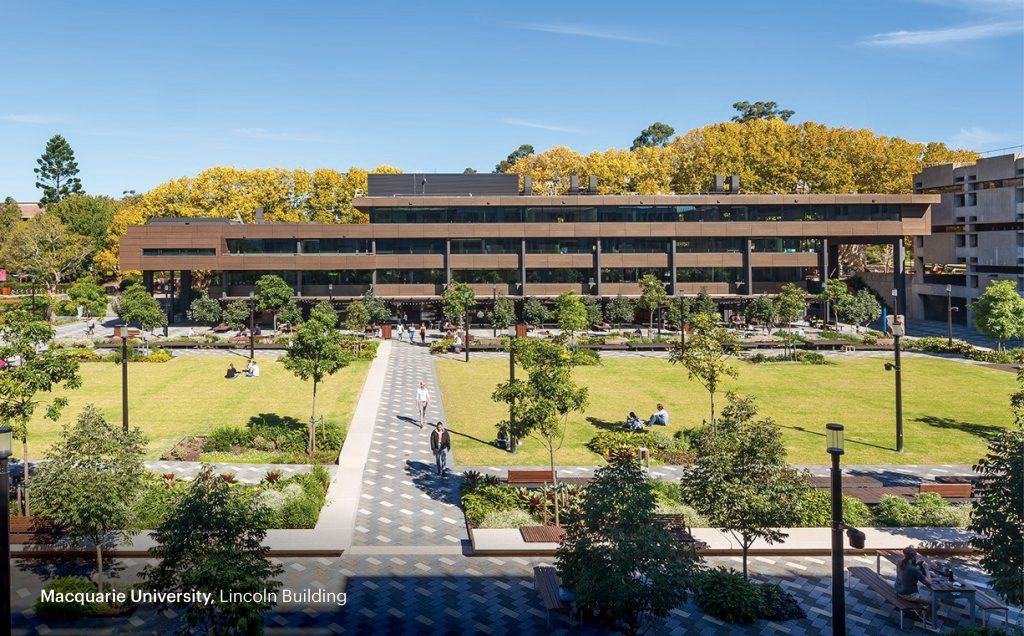
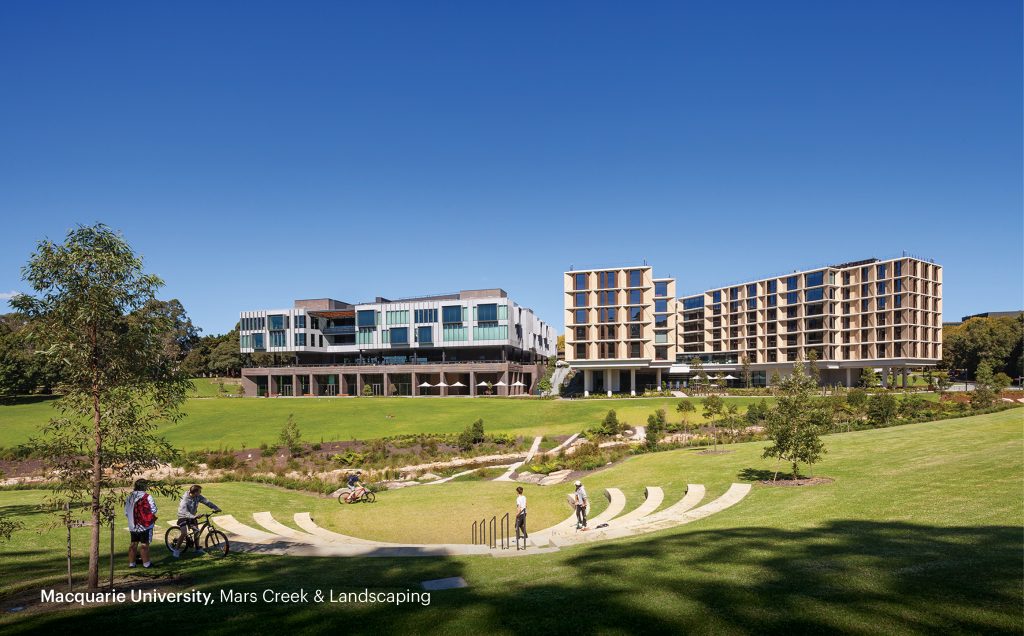
Turning vision into an inspiring place
With a clear vision and designs complete, Macquarie University awarded the $234million redevelopment project to FDC in February 2019.
Tony Carton, Head of Project Management, at Macquarie University says FDC had the best approach to the project.
“FDC had a lot of innovative ways of attacking the project. After a series of interviews and discussions regarding how we could value engineer and improve the design, we became more and more comfortable with the team as the interview process went on,” Tony explains.
A decision Macquarie University now know was the right one.
“I couldn’t imagine a more cooperative, more engaged, more conscientious company. They were an excellent partner for us to work with,” says Tony.
This project was FDC’s largest to date. At its peak there were 550 workers on site, carrying out over $1million worth of work per day.
As any project of this size would have, there were a couple of challenges along the way. A global pandemic halfway through the build, for one. But despite COVID, FDC managed to complete the build on time.
“The FDC team didn’t miss a beat. They provided additional facilities to maintain construction and their focus remained on how to get the best outcome for us and the project. As the project director, it’s been a very rewarding process, because we ended up with a great product that everyone loves,” Tony says.
The façade of the residential buildings also posed a challenge. The design was incredibly difficult to construct and the team at Macquarie was considering simplifying it.
“But we decided to go ahead with the original plan. FDC worked with our team to figure out the right solution. At no point did they say it was too hard or impossible,” Tony recalls.
But the pièce de résistance of the precinct is its magnificent graduation hall.
The five-storey 1CC building has a massive footprint and a large atrium for plenty of natural daylight. To create a large, clear space for the Graduation Hall on the Lower Ground level, and support four levels of structure above it, the structural design required careful consideration. In the original design the graduation hall was supported by a large structural steel truss located on the Ground Floor. Due to the massive loads involved, the truss would have required concrete encasement.
“We looked at the original design concept with SCP, our Engineers for the project and in consultation with Macquarie University’s Property Team,” says FDC project director Damon Malek. “We thought we could come up with a different concept, with an improved outcome for the layout on the ground floor. By removing the truss structure and essentially hanging the building off massive concrete beams on the roof, we created a clear span graduation hall and a better layout for the food court area and new U-Bar. Our solution required some challenging construction techniques, with temporary structural steel columns and hydraulic jacks to lift the entire structure to enable their later removal. But I believe the added complexity and effort was a good investment.”
It’s a part of the build that FDC and the Macquarie team hold close to their heart.
“I take my hat off not only to the architects, but to the construction team and subcontractors as well,” says Mark. “The amount of effort and attention to detail that has been put into this is really amazing. Walking into that room today and onto the stage as a student… it’s something that would sit with you for the rest of your life.”
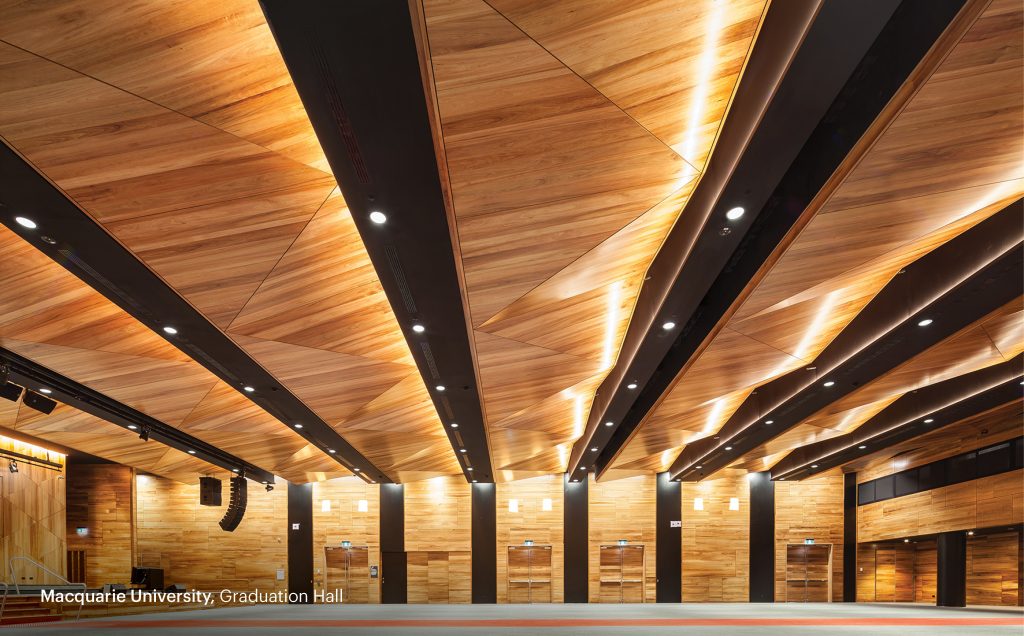
Damon is incredibly proud of his team.
“The space is about 45m long and 25m wide, clad in Tasmanian Blackwood timber veneer. It’s an amazing feeling to be in such a large, clear span space. It feels warm and the acoustics are excellent.”
The precinct that was once described as grey and ‘60s vintage has been transformed into a 21st century, vibrant and colourful hub. One building has already been accredited with 5-star green star rating, with the others soon to follow.
“When students were encouraged to come back to campus in early 2021, the place was packed,” Mark says. “It’s a testament to the hard work of everyone. It feels comfortable and alive with energy, conducive to learning, socialising and teaching. Everyone loves the space.
“FDC and its subcontractors should be proud to have been part of revitalising this public institution, here to educate and inspire future generations to come.”
